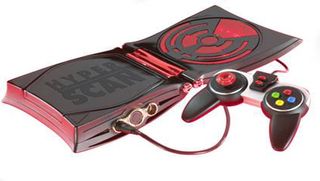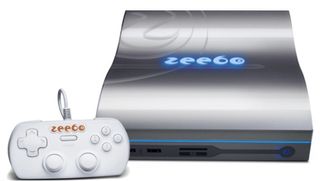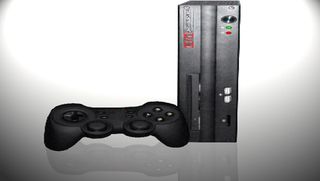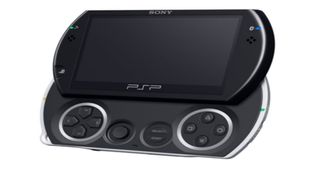Mattel HyperScan (2006)

Mattel achieved some success way back in the 70s with the Intellivision, but its second contribution to the console world was something much different--and much worse. The HyperScan was built for little kids, and sold for a cheap launch price of $70. It got its name from its built-in Radio Frequency Identification (RFID) scanner, which was used to scan trading cards that came packaged with each HyperScan game. When those cards were scanned, the console would load new features, characters, and the like into said games. Think of it like Skylanders, but horrible. Card collecting was a thing at this point, and Mattel wanted to cash in.
It didn't. Only five games were ever released for the HyperScan, and they were all hideous and not received well. The console itself was built poorly, and loading times were just horrendous thanks to its outdated internals. Again, call us crazy, but kids these days seem to be getting along with mainstream consoles just fine, so making a machine "dedicated" for younglings was probably pointless from the start. The HyperScan's gimmick, tech, and software were all subpar, and Mattel rightfully discontinued the console about a year after it launched.
Zeebo (2009)

The Zeebo sought to bring video games and other interactive content to developing markets when it launched in 2009. It was supported by more than a few notable publishers like Disney, EA and Activision, but most of its games were reworkings of mobile titles. It was fully internet-based, used 3G mobile networks, and was download-only to help combat piracy. It was hailed by many in the tech press as a potential game changer in the industry's efforts to expand its global reach.
But while the Zeebo was a cheap option for gamers in Mexico, Brazil, and other growing nations, it wasn't met with much fanfare. The games weren't great (or plentiful), the design was iffy, and the third world's markets didn't open themselves up to a third world console. The platform was discontinued by 2011. Zeebo's website teases that some sort of successor is in the works, but it also says that follow-up is coming in "2012," so it's hard to say if and when it'll ever arrive.
Envizions Evo Smart Console (2009)

Released in 2008, the Evo Smart Console followed up on the dream of the Indrema L600 in that it actually was Linux-based and open source. It was another one of those "basically-a-PC-in-a-box" type deals, and it sported the usual multimedia features alongside some Windows- and Amiga-based games.
Unfortunately, those games were largely obsolete, and the system as a whole was underpowered. Very few people bought--or ever heard of--the Smart Console, and its planned successors never materialized. Envizions' founder went on to form a new startup called EnGeniux, which is trying to develop a console called the Oton, which the company claims can create its own games. We'll believe that when we see it.
PSP Go (2009)

It's too early to declare the fate of the PlayStation Vita, but Sony's previous stab at the portable market definitely didn't work out as hoped. The PSP Go was another SKU of the largely successful PSP, and it was just as powerful as the rest, but it came in a much smaller, slide-out form factor. Its biggest change, though, was its removal of the PSP's usual UMD drive. This meant that the Go's games could only be had through downloads. This was like a test run for Sony, one where it could try to usher in a digital-only future on a contained platform and see what would happen.
Very few good things happened. Besides the fact that the PSP had largely run its course by late 2009, not all PSP games were available through digital distribution. This left a swath of games unplayable by default, a fact that wasn't helped by all the inherent issues that the PSN Store already had (slow download speeds, high prices, etc.). Sony's decision to charge $250 for the dated hardware was even more unintelligible. Consumers generally ignored the Go as a result, and Sony discontinued the model after the Vita launched a short time later.
Back to the winners

That's probably enough failure for one article, eh? The Ouya, GameStick, and Shield are filled with hope and possibility today, but who knows, maybe we'll have a few more entries to add to this list in the coming years. Let's hope not. Either way, we think we're just going to go back to our PCs. It's safer there.
And if that somehow wasn't enough disappointment for you, be sure to check out our takes on the Top 13 failures of this generation, Gaming's most hated technology failures, and the Top 7 failed futures of gaming.
